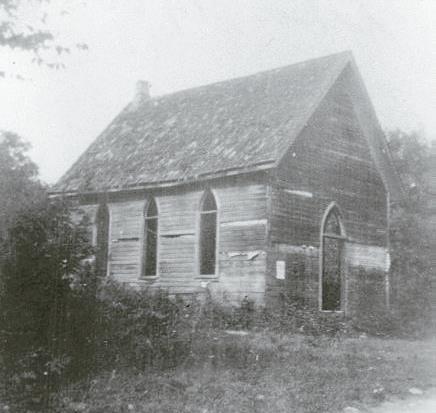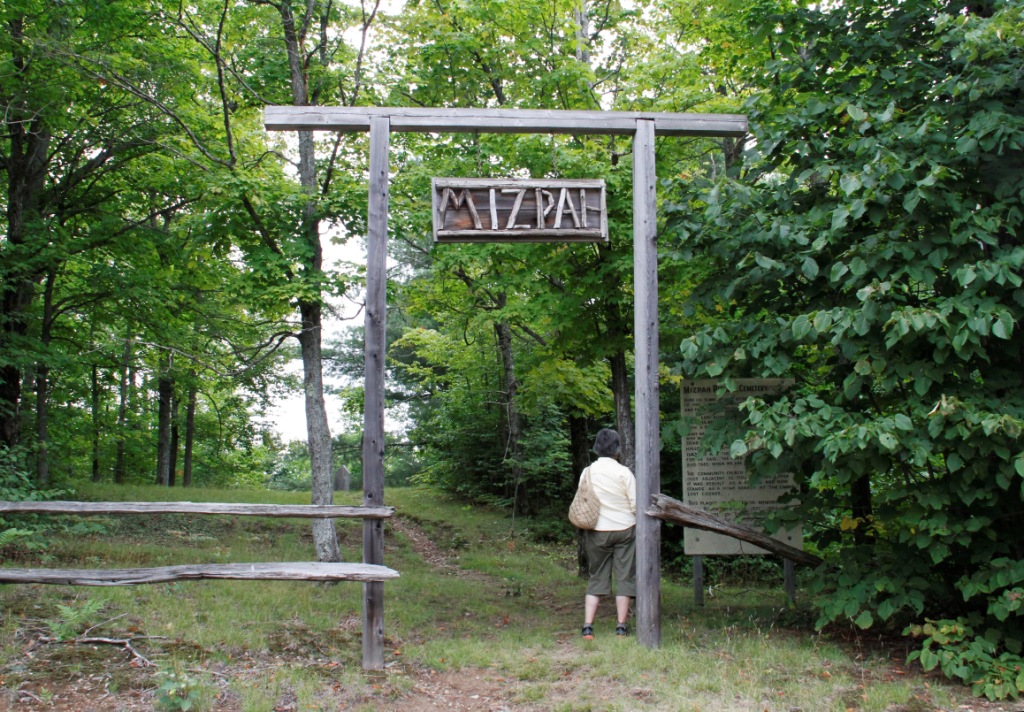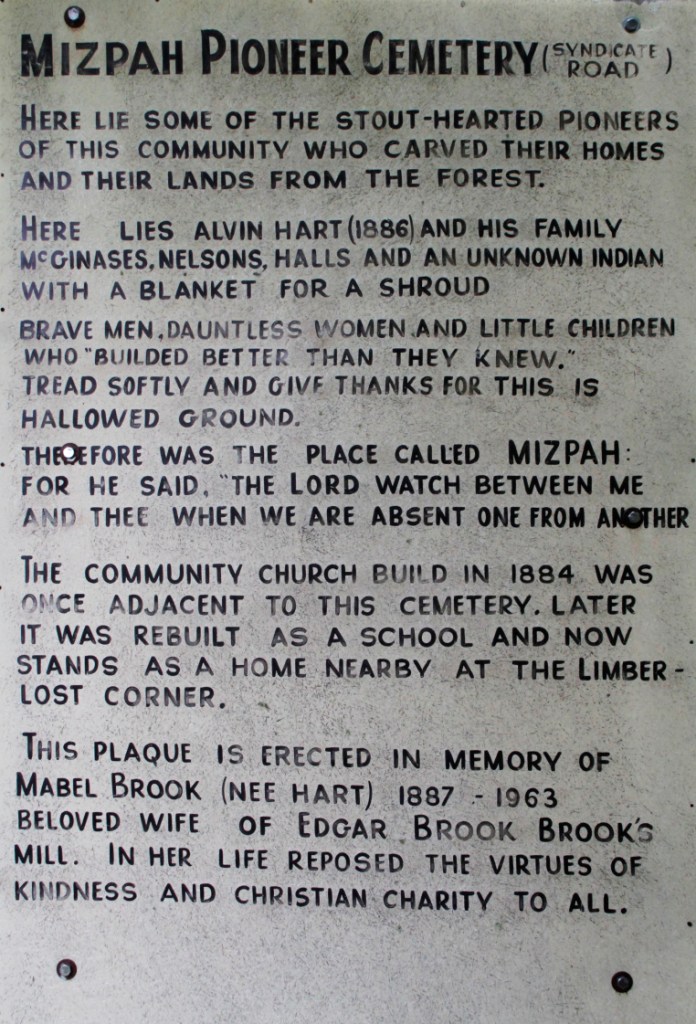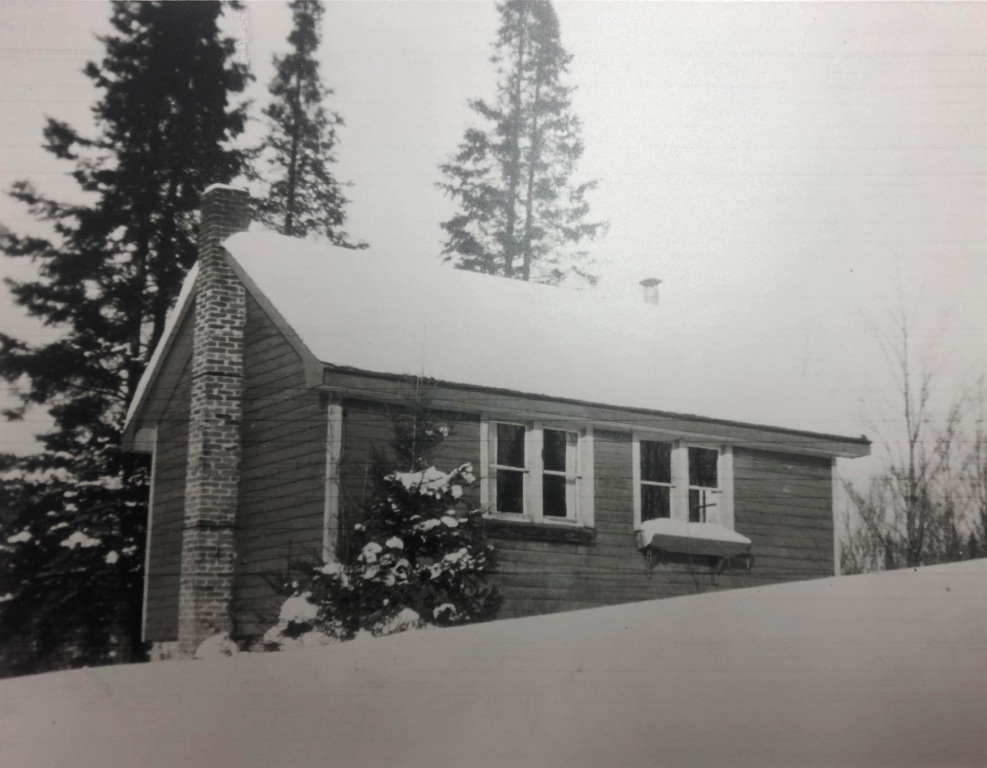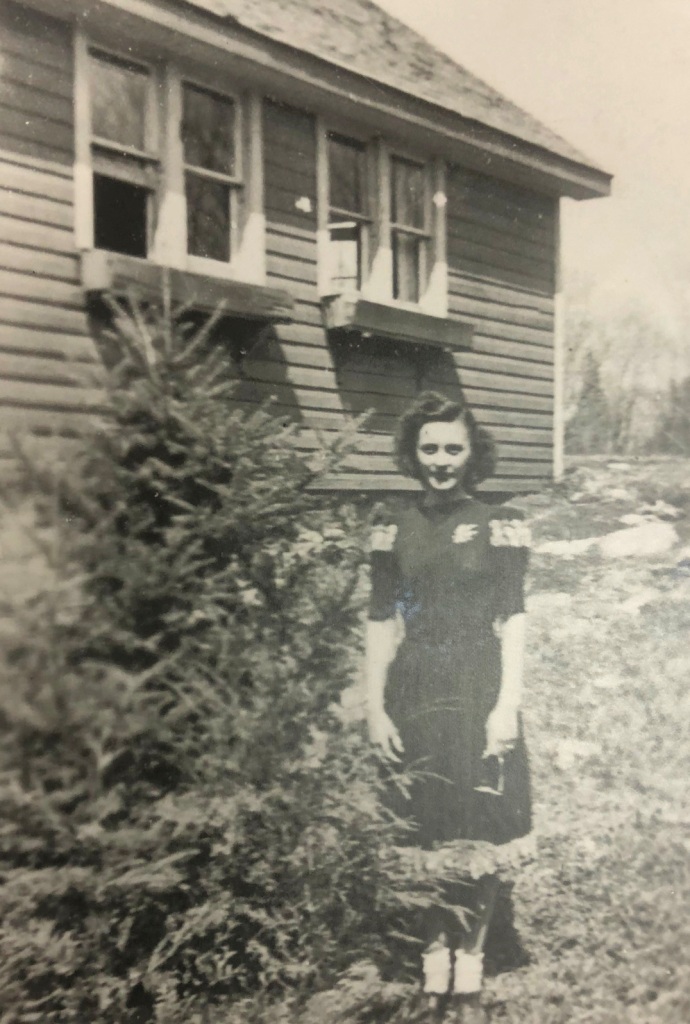Antioch Post Office
In 1882, settlers in the Bella-Rebecca Lake area were granted a post office, first operated by Edmund Garnet at his homestead on the north side of Bella Lake. Antioch post office saved local settlers a trip to Grassmere for their mail, but it did not stay long in one location. In 1888, after the Garnet family had departed, the Antioch post office made the first of many moves, this time (and not without controversy) to the farm of John Lee on Lot 17, Concession A, on the Bobcaygeon line. Each move followed the appointment of the next postmaster, as the previous one resigned or left the area. The Antioch post office moved about eight times between 1882, when it was first established, and 1923, when it was closed. The name “Antioch” may have been the choice of Sinclair resident Michael McAlister, who is credited with having named the Bethany post office and whose son, Robert Hector, had taken up lots on what is now Heck’s Lake in 1880.
Hillside Mission
Of the four appointments of the Methodist Church’s Hillside Mission, two were significant to Bella and Rebecca Lakes. Members of the Antioch appointment worshipped at the home of Edmund Garnet, the site of the first Antioch post office. Nelson’s appointment, at the southern tip of Rebecca Lake, served a small congregation who first met for church services at the log school house built early in the 1880s.
Antioch Appointment
Members of the McAlister, Staples, McBrien, Swain, and Hart families began attending services at the Garnet home on Lot 5, Concession 9, on a hill overlooking Bella Lake, sometime before 1886. When the Garnet family moved away in 1887, the appointment was closed, but services were offered again during 1888 by the Rev. William Walker, despite the abandoned state of the homestead. His experience of one morning service, written in his memoir, appears in the history of Hillside’s Pioneer Memorial Church:
At one appointment called Antioch, situated on the extreme northern limit of the mission, we had recommenced preaching, it having been dropped the previous year. The place in which the service was held was an old deserted house with broken windows patched with shingles and rags. A dog followed some of the settlers into the building, and as they, on the commencement of the service, rose off the rough planks upon which they had been seated to engage in the singing of the first hymn, the canine, who was doubtless of a pious turn, also commenced singing or howling, and a man who was sitting on the first plank and was one of the greatest fighters and swearers in the Dominion of Canada, looked very much annoyed. However, we all thought the animal would soon quiet down, and we would not disturb him; but as the singing progressed our friend, the dog, also warmed up, and at last Mr. Widdess, the prize fighter, got worked up beyond control, and springing from his seat caught the devoted dog by the back of his neck, and amid the most frightful howls ran across the room with him, and when he reached the door raised the hand that contained the now frightened animal, and gave him a tremendous kick, sending him several yards and at the same time advising him to proceed without delay to a much warmer climate than Muskoka. The congregation, which consisted of fifteen or twenty persons, broke down singing and burst out laughing, and we all had to catch flesh and pinch until we almost yelled with pain to keep back the nearly irrepressible volume of mirthfulness. In a moment or two, all regained their equilibrium, and the service proceeded as usual, with our friend Mr. Widdess looking grave as though nothing had happened.
Mizpah and the Nelson Appointment
The Mizpah church, opened in 1896, was built by members of Nelson’s appointment of the Hillside Mission near the burial ground, now called Mizpah Pioneer Cemetery, set aside by the community on William Nelson’s land at the southern tip of Rebecca Lake. “The church erected by the Methodists of Sinclair and Findlayson [sic] is rapidly nearing completion and is a neat little frame 30x40 feet,” wrote a correspondent to the Huntsville Forester in April 1895. “The site is a very favourable one situated opposite Nelson’s farm on the Findlayson road, about 3 miles from Fields’ corner, and the picturesque view obtained from the hill of Rebecca Lake and picnic grounds adds to the value of the property.”
Both cemetery and church were active until into the new century, when many settlers left to seek better land in the Canadian West. A snapshot of the fleeting community is found in the report of a Christmas social held at the church in December 1900:
The evening of the occasion being Christmas night, grave fears were entertained by a few querulous people (your correspondent among them) that the turnout would not be large, owing to the fact that most people prefer staying at home that night to enjoy their own fireside. But in spite of this fact, and a severe snowstorm that set in, in the afternoon, the church was filled to overflowing, and those who came late found the task of getting a seat a most difficult one. The evening opened with a hymn and a lengthy program was rendered. The school children did exceedingly well under the careful guidance of their schoolteacher, Miss Golden. Though your correspondent travelled many miles to see it, he felt well repaid for his trip. As soon as the program was finished, many laughable incidents occurred, clay pipes being given out to those especially averse to tobacco. It would have melted the heart of a stoic to have seen the happy expectant faces of the little ones as they watched the tree with its glittering toys. Two beautiful solos were rendered by Mrs. (Rev.) Roach, which were highly appreciated by the audience. The Rev. Mr. Roach occupied the chair and interspersed many a shrewd and witty saying during the evening. At 10:30 the meeting was dismissed and all returned to their homes happy and content.
Limberlost School
Mizpah church closed in 1907 and was demolished in the early 1930s, the materials being used to build a new school house across the road from the old log one that had long since burned down. Pupils at the first log school, built in the late 1880s, had included the daughters of Andrew and Elizabeth Hart, of Sunset Farm, and the McMaster children from Clear (Solitaire) Lake.
The new frame school house opened in 1933, serving the families in the area of Limberlost, Fieldale, Camp Billie Bear, and, later, Brook’s Mill. Among the Limberlost students who received acclaim in 1939 for their “snappy school paper,” the Juvenile Weekly Splash, were Delbert McQuaide of Tynoka, Bobbie and Nora Hill of Limberlost, Sheila and Ian McLean of Tynoka, Dick Scott, and Mac Wilson. The school had about 20 students that year, under teacher Mary Purdy. The Limberlost school operated until 1945, when it was closed. It served for a time as a community centre and was then converted to a private residence.
Sources:
Huntsville Forester, April 26, 1895, p. 2; “Local Briefs: Snappy School Paper,” February 23, 1939, p. 1; “School Pupils Publish Weekly Paper,” May 25, 1939, p. 2; “Fulfills Early Dream of Erecting Tombstone,” September 8, 1955, p. 1.
Mansell, W. Dan, Sunset Farm: The Origin and History of this Free Land Grant Farmstead in Muskoka (Peterborough: asiOtus Natural Heritage Consultants, Barbara Paterson Papers, 2012).
Mansell, W. Dan and Carolyn Paterson, eds., Pioneer Glimpses from Sinclair Township, Muskoka (Peterborough: asiOtus Natural Heritage Consultants, Barbara Paterson Papers, 2015).
Paterson, Barbara, “Muskoka doesn’t have ‘Ghost Towns,’ it has Ghost Offices,” “Mizpah,” and “Memories of a Christmas from the Early 20th Century,” The Sinclair Raconteur’s Anthology: Barbara Paterson’s Published Stories, eds. W. Dan Mansell, Carolyn Paterson, and Marlene Walker (Peterborough: asiOtus Natural Heritage Consultants, Barbara Paterson Papers, 2014), pp. 11-15, 68-69, 90-92.
Paterson, Barbara, Ruth Lehman, and Robin Sharp, eds., Pioneer Memorial United Church: A Centennial History (Pioneer Memorial Church, 1992).
|
|





